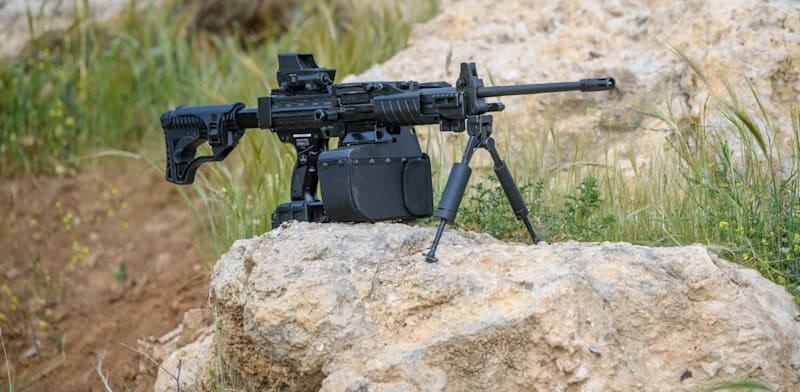IAF Upgrades Su-30MKIs with ASRAAM Missiles in 'Super Sukhoi' Overhaul, Replacing Russian R-73

In a bold modernization step, the Indian Air Force (IAF) is set to equip 84 of its Su-30MKI fighter jets with the European Advanced Short-Range Air-to-Air Missile (ASRAAM) by MBDA, replacing the older Russian-made R-73 missile. This upgrade is part of the IAF’s extensive "Super Sukhoi" program, which not only aims to revamp the aircraft's weaponry but also bring advancements in avionics, radar systems, and targeting capabilities to ensure the Su-30MKI remains competitive against evolving threats.
ASRAAM vs. R-73: An Evolution in Missile Technology
The shift from the R-73 to the ASRAAM is significant, reflecting the IAF’s ongoing trend of integrating Western missile systems to bolster close-combat effectiveness. The Russian R-73 has long been a reliable weapon with infrared guidance, but its capabilities are starting to lag behind newer technology. In contrast, ASRAAM offers superior range, maneuverability, and “fire-and-forget” capability, meaning that once the pilot locks onto a target and fires, they no longer need to actively guide the missile. This advantage frees up the pilot to refocus on the combat environment, increasing overall survivability and effectiveness.
The ASRAAM’s specifications further illustrate its advantages. It weighs only 88 kilograms, which is significantly lighter than many other air-to-air missiles, aiding in its superior maneuverability. The ASRAAM also boasts a range exceeding 25 kilometers, granting pilots a critical advantage in targeting threats well before they come within striking distance of the Su-30MKI.
Strategic Advantage of the ASRAAM
The ASRAAM’s advanced infrared guidance system and off-axis firing capabilities allow it to engage targets even at extreme angles, offering a distinct advantage in dynamic air-to-air combat. This capability is particularly useful in intense, fast-moving dogfights where quick response times and agility are paramount. The ASRAAM’s extended range and ability to engage at close quarters make it a formidable addition to the Su-30MKI, a multi-role fighter known for its adaptability and firepower.
The missile’s effectiveness has already been validated on other IAF platforms, such as the Jaguar DARIN-III and the LCA Tejas Mk1A, where it demonstrated exceptional performance in both range and target acquisition. This successful deployment encouraged the IAF to incorporate ASRAAM into its more formidable fighter fleets, solidifying its role as the IAF’s go-to short-range air-to-air missile.
‘Super Sukhoi’ Modernization Program: Enhancing Combat Readiness
The ASRAAM integration is just one part of the larger ‘Super Sukhoi’ upgrade initiative, a comprehensive program designed to extend the operational life and increase the combat readiness of the Su-30MKI fleet. By upgrading radar, avionics, and weapon systems, the IAF aims to make the Su-30MKI as formidable in close-range combat as it is in long-range engagements. This shift aligns with India’s strategy of reducing reliance on single-source defense procurement and gradually adopting a more versatile, globally sourced arsenal.
Indigenous Development and Strategic Partnerships
Bharat Dynamics Limited (BDL) and Hindustan Aeronautics Limited (HAL) are spearheading the ASRAAM integration on the Su-30MKI, demonstrating India’s push towards self-reliance in defense manufacturing. Working closely with MBDA, these Indian defense firms have customized the ASRAAM to suit the unique operational needs of the IAF and its aircraft. This partnership reflects India’s broader strategy of fostering homegrown defense technology and reducing dependency on imports while still collaborating with trusted international partners for cutting-edge technology.
Expanding ASRAAM’s Role in the IAF
The Su-30MKI isn’t the only aircraft slated to carry the ASRAAM. The IAF plans to standardize this missile across multiple platforms, including the upcoming Tejas Mk2 fighter jets and HAL’s Combat Air Teaming System (CATS) Loyal Wingman unmanned aircraft. Standardizing weaponry across various platforms not only simplifies logistics but also boosts interoperability, giving the IAF a strategic edge in coordinated missions involving different aircraft types.
A Strategic Shift Toward Interoperability
With the ASRAAM’s integration into diverse airframes, the IAF aims to maximize flexibility and efficiency in combat. This standardization approach allows the IAF to pool resources and streamline maintenance, while also equipping a broader range of aircraft with potent short-range engagement capabilities. The ASRAAM upgrade on the Su-30MKI is a crucial step forward in enhancing the operational flexibility and combat readiness of the IAF’s aerial fleet.
This strategic upgrade to the Su-30MKI’s weapon systems is part of a larger, forward-looking vision for the IAF. By prioritizing weaponry that integrates seamlessly across multiple platforms, the IAF is ensuring its fleets can adapt to various mission types with a versatile, potent combat toolkit. As the IAF continues to evolve, integrating technologies like ASRAAM into its frontline fighters highlights India’s growing commitment to modernizing its air combat capabilities and enhancing its defense posture on a global scale.


